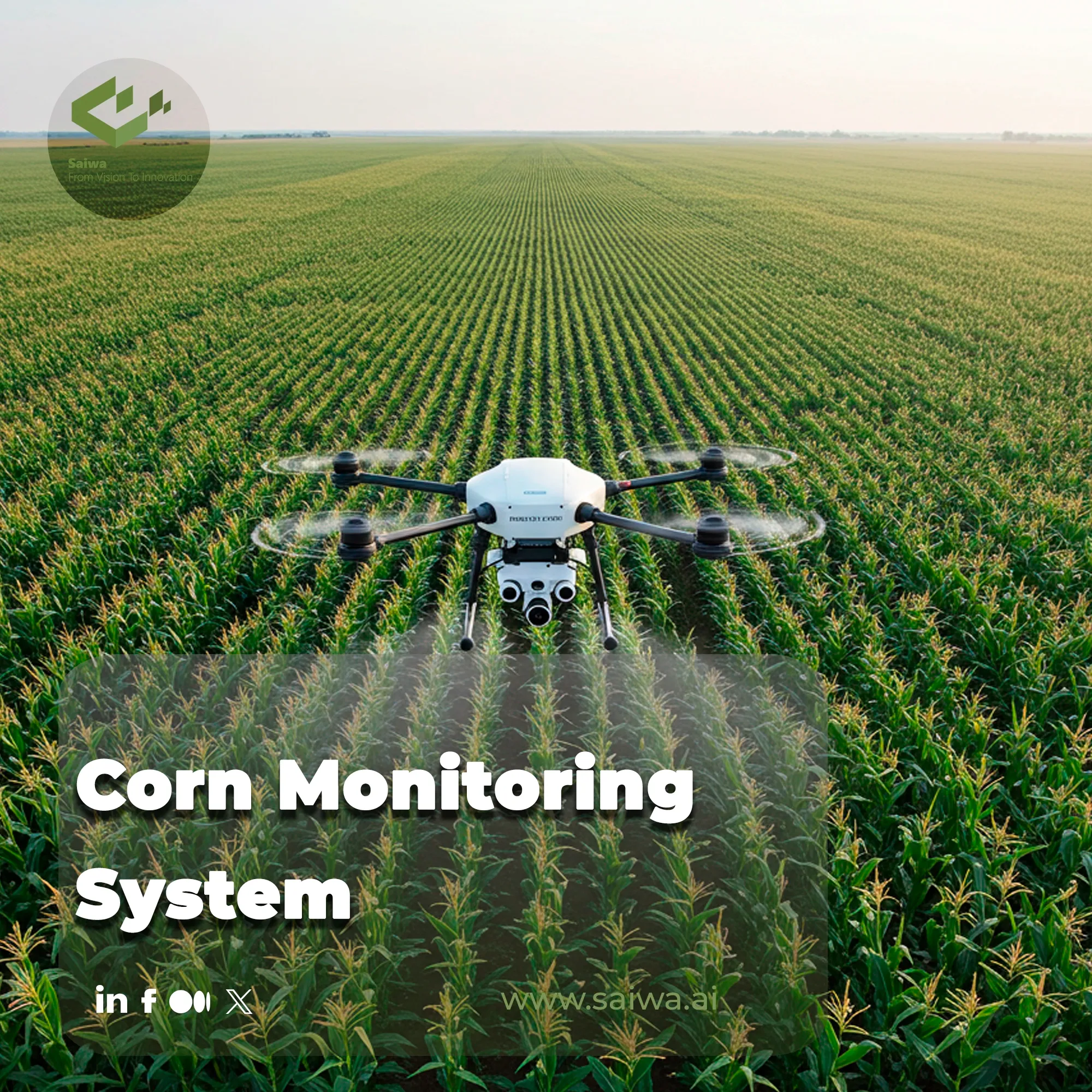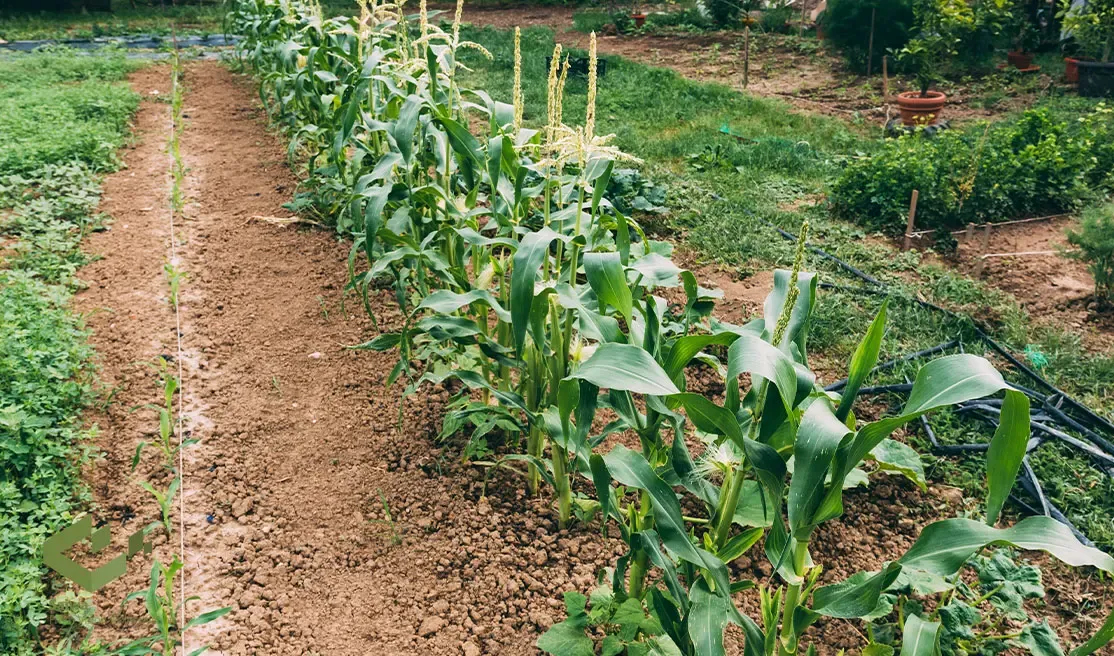Corn Monitoring System | Modern Technologies Farmers Use to Maximize Yields

The challenge of modern agriculture is moving beyond intuition to data-driven precision, a shift especially critical in corn cultivation. Traditional yield forecasting often fails, relying on overly simplistic geometric models that ignore dynamic field variables like terrain and harvester speed. This gap highlights a significant need for advanced analytics.
Platforms like Sairone by Saiwa are pivotal, transforming complex aerial data into actionable intelligence. This article provides a comprehensive technical guide to the technologies, biological imperatives, and practical applications that define a modern corn monitoring system.
What Makes Corn Different? Biological Traits and Smart Monitoring Imperatives
Corn's unique biological rhythm and its sensitivity to environmental factors demand a monitoring approach far more sophisticated than that for other staple crops. Minor, often invisible, shifts in its environment can disproportionately impact final yield, making reactive measures insufficient.
To truly optimize its growth, a proactive and data-rich strategy is essential, focusing on the specific indicators that define its health and productivity at each stage. Some of the most crucial elements to consider are:
Why It Demands Precise Monitoring: Corn’s metabolic rate is highly sensitive to fluctuations in moisture and temperature, leading to significant post-harvest quality loss if not managed preemptively. Furthermore, its stacking pattern in a harvester is inconsistent, making AI-based analysis necessary for accurate in-field assessment.
Critical Growth Indicators in Corn Fields: Key metrics include chlorophyll content, which reveals photosynthetic activity, Leaf Area Index (LAI) for canopy density, and real-time nutrient levels that prevent deficiencies.
Growth Stage-Specific Monitoring Needs: Success depends on targeted actions at key phases: ensuring optimal planting depth and spacing at the outset, managing water intake during critical flowering and seed-filling stages, and pinpointing the precise moment for harvest.

Modern Tools and Methods Used in Corn Monitoring Systems
To meet these precise demands, modern agriculture deploys a suite of interconnected technologies. These tools work in concert, capturing a multi-dimensional view of the field that was previously unimaginable. The following are the core components of this technological ecosystem.
IoT Sensors
These devices form the nervous system of the smart farm, collecting real-time data on soil moisture, temperature, and nutrient composition.
Drones and Satellite Imaging
Providing the "eyes in the sky," drones capture high-resolution multispectral images to assess plant vigor, while satellites offer macro-level views of large-scale operations over time.
AI and Machine Learning
This is the brain, processing vast datasets from sensors and drones. Advanced models, validated through techniques like EDEM discrete element simulation, identify patterns and make predictions that go far beyond human capability.
Remote Sensing
This technique measures plant health from a distance by analyzing electromagnetic radiation, allowing for non-invasive assessment of chlorophyll content and canopy density.
Data Analytics Platforms
These platforms are the command center, aggregating all data into user-friendly dashboards with heat maps and graphs, converting raw numbers into actionable insights for the farmer.
Practical Applications of Corn Monitoring Systems for Farmers
The synergy of these modern tools creates a powerful and practical corn monitoring system that fundamentally reshapes daily farm operations. This data-driven approach allows producers to move from generalized field management to targeted, intelligent interventions. Below are some of the most impactful applications transforming corn cultivation:
Precision Irrigation and Nutrient Management: Using soil moisture data, farmers apply water and fertilizers only where and when needed, conserving resources and preventing waste.
Crop Health Monitoring: Multispectral imagery enables the early detection of stress, disease, and nutrient deficiencies before they become visible to the naked eye, allowing for timely intervention.
Yield Monitoring and Mapping: Advanced systems facilitate highly accurate crop yield estimation in real-time during harvest, creating detailed yield maps that inform strategies for future seasons.
Weed and Pest Control: Drone technology enables precise weed detection and Precision Spraying Technology, minimizing chemical use and its environmental impact while effectively protecting the crop.
Unlock the Full Potential of Your Corn Fields with Sairone
Moving from data collection to decisive action is where true value is realized. Sairone is an advanced agricultural intelligence platform designed to bridge this gap. By analyzing high-resolution drone imagery, Sairone automates the detection of invasive species, plant health monitoring, and delivers the precise insights needed for modern farming. It translates complex visual data into clear, field-level recommendations, empowering you to manage your corn crop with unparalleled accuracy and efficiency.
Conclusion
The evolution of corn monitoring is a paradigm shift from reactive farming to predictive, data-driven agriculture. By embracing intelligent systems, farmers can overcome the limitations of traditional methods and manage the complex variables of crop cultivation with scientific precision. The most crucial takeaway is that modern AI models consistently outperform simple formulas, ensuring more stable, reliable, and profitable outcomes.
Note: Some visuals on this blog post were generated using AI tools.
